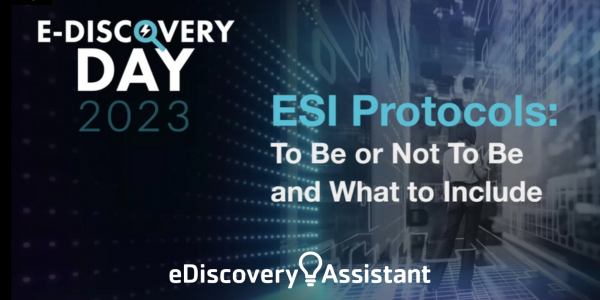Determining the scope of preservation in a matter — no matter the level of complexity — involves understanding the people, date range and sources of data to be kept. That’s a feat unto itself, and one that the other side is not going to have any insight into when the matter begins.
One of the practice tips that I’ve used effectively over the years is to be out in front of the preservation argument. To do that, I scope out and send a letter to opposing counsel detailing the proposed scope of preservation for my client. The goal of the letter is to advise opposing counsel what we’ve identified and to lay out our position as far as what is relevant to the matter for preservation.
The bullet points below describe the information that can go in the letter. Note, however, that the level of detail is often commiserate with the level of cooperation between the parties. By that, I mean the more hostility, the less you might include. The flip side of that is that you can save your client time and a great deal of money by having the parties agree up front what must be kept.
- Key Custodians — note that these are the key custodians, not everyone who might be listed on the legal hold.
- Date range of information to be maintained.
- How specific types of data will be handled, including:
- whether mobile devices will be maintained/imaged, etc.
- what, if any, social media will be preserved, and if so, what platforms, websites, etc.
- whether entire hard drives should imaged or certain files collected.
- Any issues with legacy systems or changeovers that may impact preservation or production in the case, e.g., switching archive systems, etc.
- Production form of data from databases if necessary.
- Identification of any third-party data that may be at issue.
- Basis for decisions made on preservation scope.
- Date for response to your proposal.
- Retention periods of specific data types that require a response to the proposal by a fixed date, e.g., if I do not here back from you by x date, my client will resume its standard 30-day retention period on email.
- Proposed preservation protocol for the opposing party based on what you have learned about the systems, key custodians, and date ranges from your client.
- Basis for your proposed preservation plan for the opposing party.
The preservation letter often serves as a great jumping-off point for a meet and confer, and I usually invite opposing counsel to discuss our preservation proposal as well as theirs. Remember that tone is important and I am an enormous advocate for in-person meetings, or telephone as a last resort. Email is a terrible way to communicate about discovery scope and more often leads to increased hostility rather than dispelling it.
Preservation letters are not appropriate in all instances. That being said, I’ve used them to start a conversation, lay a foundation of how my client plans to proceed, set the tone of discovery, and save my clients greenbacks. Experiment with an approach that works for you, but consider that the cooperation that is so necessary for discovery now can start at the very early stages. Remember, you catch more flies with honey than vinegar.
Drop me a line and let me know if you’ve used or found early preservation letters to be useful, and if you include anything else in yours.
This article first appeared on Above the Law.





